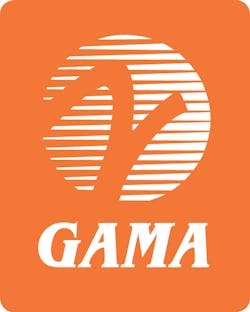Washington, DC—General Aviation Manufacturers Association (GAMA) President and CEO Pete Bunce today testified before the U.S. Senate Commerce, Science, and Transportation Aviation Subcommittee about the need to implement improvements in FAA certification processes and address other regulatory impediments. According to Bunce, such changes would better leverage safety resources and improve the competitiveness of manufacturers. The hearing was held in advance of Senate action to reauthorize the FAA; the agency’s current authorization expires on September 30, 2015.
In his testimony, Bunce noted the general aviation industry’s significant contributions to the U.S. economy. A recent industry-wide study by PricewaterhouseCoopers found that general aviation supports 1.1 million total jobs and $219 billion in total economic output in the United States annually. To continue to grow in a very competitive global marketplace, U.S. general aviation manufacturers need government policies that will streamline the certification process and enhance efficiency, making it easier for them to bring new, safety-enhancing products and technologies to market.
Specifically, Bunce outlined six priority areas for Senators to consider addressing in the next FAA reauthorization. These include:
· Ensuring more effective use of delegation programs, including Organizational Delegation Authorization (ODA), to utilize FAA and industry resources more efficiently and effectively
· Focusing on workforce initiatives—training, performance objectives, career progression, and skill development—to enable the success of FAA employees
· Encouraging FAA to use metrics and qualitative surveys to provide constructive feedback on FAA and industry certification project performance
· Strengthening FAA international efforts to facilitate the timely acceptance of FAA-certified aircraft abroad
· Supporting efforts to help transition the piston aviation fleet from leaded to unleaded fuel
· Addressing inconsistencies in the interpretation of FAA regulations by different employees and regions of the FAA
Bunce also highlighted the importance of reauthorizing the Export-Import Bank of the United States, which expires on June 30, 2015. The Bank has provided at least $1.9 billion in financing guarantees for U.S.-based general aviation manufacturers since 2012, including small aircraft manufacturers and suppliers. While the United States market accounted for about four out of every five airplane sales a decade ago, the market in 2014 was roughly evenly split between U.S. and non-U.S. sales, making the Bank’s role in facilitating exports all the more important.
“At the core, GAMA has always worked to promote policies that benefit general aviation manufacturers and their employees by striving to achieve the FAA certification efficiencies needed to get their products to the marketplace,” Bunce said. “Collectively, with the leadership of the U.S. Congress as well as the FAA, we have made significant strides, but there is much work ahead of us to ensure this vital and important part of our economy can be sustained and grown. I believe we are now at a tipping point where we need to see efficiency initiatives take root within the regulatory bureaucracy. We will only realize this goal through the collective focus of policymakers, regulators, and industry on change management, and I want to thank Chairman Ayotte, Ranking Member Cantwell, and other members of the Subcommittee for convening this important hearing to discuss solutions.”
A copy of Bunce’s testimony is available at http://www.gama.aero/node/13422.
GAMA is an international trade association representing over 80 of the world's leading manufacturers of general aviation airplanes and rotorcraft, engines, avionics, components and related services. GAMA's members also operate repair stations, fixed based operations, pilot and maintenance training facilities and manage fleets of aircraft. For more information, visit GAMA's website at www.GAMA.aero.



